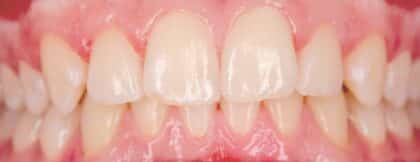The Artistry Behind Creating Dental Crowns
This is a question we here at Affiliated Dentists hear quite often. Below you’ll read about why a dental crown may be necessary and the different types of materials used to make a crown.
Understanding Dental Crowns
A dental crown – or “cap” as some people call them – is “a type of dental restoration that fits over the remains of a tooth to restore the appearance of the natural tooth or to protect it from further damage.” Crowns are most commonly used when a tooth has either a large old metal filling or a great deal of decay. Once the old filling or decay is removed, there often isn’t enough tooth structure left, and the tooth is too weak to safely and properly place any other type of restoration.
When Dental Crowns May Be Needed Over A Filling
- Cover a dental implant and hold a dental bridge in place
- Cover and support a tooth that had an old filling break down
- Make a cosmetic modification
- Hold a tooth together after a root canal
- Protect a weak tooth from further fracture or damage
- Crowns support a large filling when there isn’t enough structure remaining in the tooth.
Materials used in Dental Crowns
The most commonly placed crowns are made from the following material:
- Metal – Metals used to make dental crowns can be gold, base-metal or other alloys. They’re most resistant to chewing, biting and typically last the longest, rarely chipping or breaking. The biggest drawback is the look of the crown itself, making them a popular choice for more out of sight teeth such as molars.
- Porcelain fused to metal – These types of dental crowns are a hybrid between metal and porcelain. The porcelain part is tooth shaped and is fused onto the metal shell that fits over the damaged tooth. This ensures that the dental crown looks like the rest of your teeth. This type of dental crown is also very strong, but the porcelain could chip, which would expose the metal underneath, meaning this is also a good option for molars.
- All porcelain – Even though they may chip and aren’t as strong to biting and chewing pressures as full metal crowns, porcelain crowns provide the best natural match in color and shape than any other dental crown type. They are also the best choice for those with a metal allergy. All porcelain dental crowns are the first choice for patients who need a dental crown on a front tooth.
Crown Placement Comes Two Weeks After Initial Visit and Here’s Why
When you are in for your initial crown appointment, after they take an impression, the dentist will prepare the tooth for the crown placement by removing all decay, placing any necessary build up material if needed, and shaping the outside of the tooth to allow the dental crown to slide over the top if it. An impression of the tooth is taken to send to the dental lab.
Before you leave, they use the first impression that was taken before the procedure to create a temporary crown. This will fit over your tooth and protect it from temperature and decay until your permanent crown comes back.
Most clinics schedule your crown seat appointment two weeks from your initial appointment to allow for crown creation as well as shipping to and from the dental lab.
Let’s Look Inside The Dental Lab
Once the lab receives your case, the lab technician will make a mold of your prepared tooth using the impression your dentist took at your appointment. The impression is not only of your tooth, but of surrounding teeth. The mold will show them how your tooth look now and how your teeth should fit together with the new dental crown in place. Using this mold, they mix up another type of impression that they pour onto it, filling in the spaces and creating what your crown will look like. Fabrication of your dental crown can now begin.
For metals this is done at extremely high temperatures, as the metal can only be shaped when it is in molten form. For porcelain, the material is initially liquid-like, but still needs high temperatures to cure and harden once it is in the perfect shape of your tooth. Often these temperatures can reach up to 2,372 °F (1,300 °C), and sometimes dental crowns need to be heated for up to eight hours to ensure they have been completely set and cured. Once fully cooled and set, the mold can be broken apart to remove the crown. Finishing coats are applied, then the crown is shipped back to the dental office.
What To Do If Your Temporary Crown Comes Off
If your temporary dental crown comes off, don’t worry. If it’s intact, we can easily put it back on at no charge. If the temporary crown broke, we can create a brand new one at a quick appointment, also free of charge.
Regardless of the state of your temporary crown, it is important to come into the closest Affiliated Dentists office right away. Without the temporary crown, damage and even decay can affect your actual tooth underneath. In addition, your tooth may be extremely sensitive when exposed to air, liquid, and food, being difficult to keep clean. This is why when a temporary crown comes off, it is considered a dental emergency, something we want to address as soon as possible.
Places such as Walgreens or CVS do carry over the counter temporary dental cement, but this should only be used to keep your temporary crown on until our offices open next.
If your temporary crown comes off, be sure to call us immediately. For even more information on dental crowns and temporary crowns, visit our dental crown FAQ.


